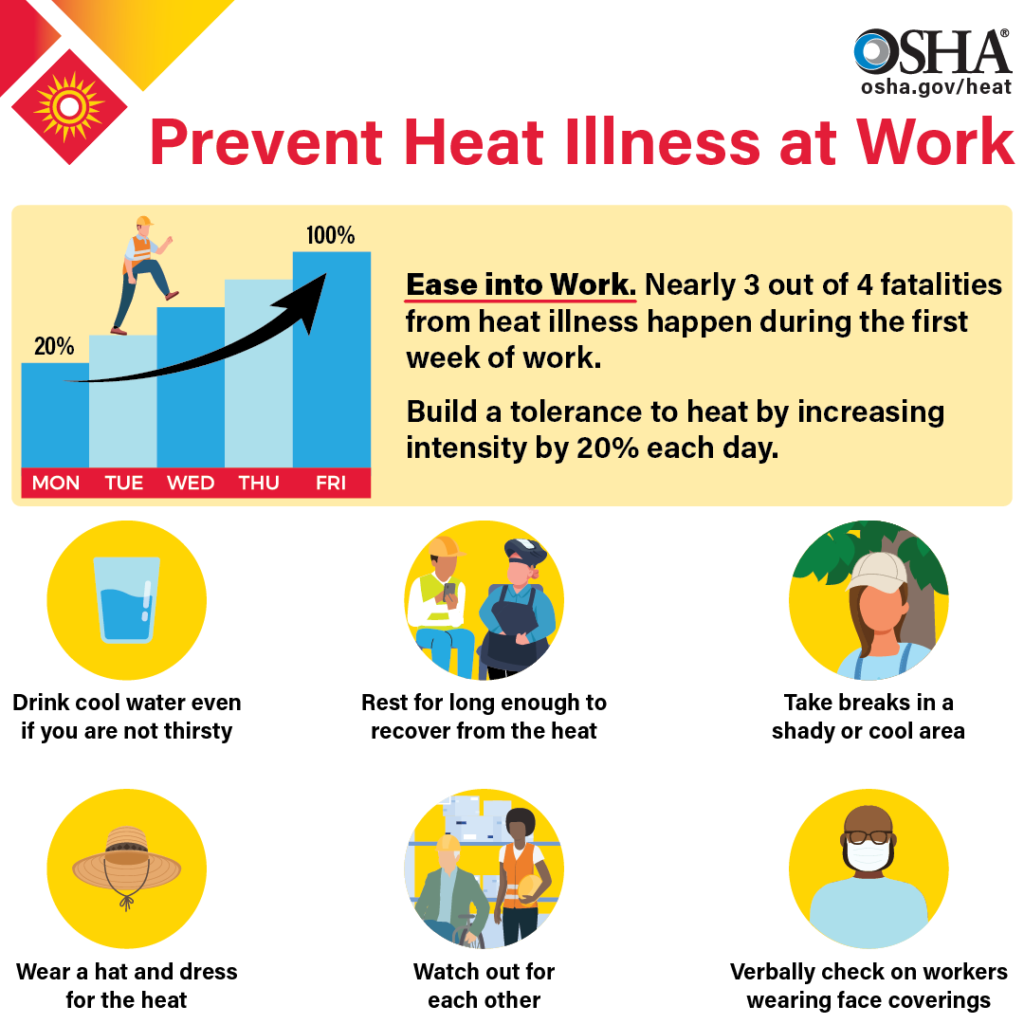OSHA (Occupational Safety and Health Administration) is rolling out a new program, “National Emphasis Program” (NEP) and through the program, OSHA will conduct heat-related workplace inspections before workers suffer completely preventable injuries, illnesses or, even worse, fatalities. The program is designed to protect indoor and outdoor workers from heat illness and injuries. We encourage employers to start to prepare for heat-related workplace inspections now.
As part of the program, OSHA will proactively initiate inspections in over 70 high-risk industries in indoor and outdoor work settings when the National Weather Service has issued a heat warning or advisory for a local area. On days when the heat index is 80 F or higher, OSHA inspectors and compliance assistance specialists will engage in proactive outreach and technical assistance to help stakeholders keep workers safe on the job. Inspectors will look for and address heat hazards during inspections, regardless of whether the industry is targeted in the NEP.
They identified 70 high-risk industries in indoor and outdoor work settings, including the following:
| Outdoors | Indoors |
| Farming and agriculture | Bakeries and restaurants |
| Construction (especially road, roofing and other outdoor work) | Automotive parts, accessories and tire stores |
| Waste collection | Fire services |
| Landscaping services | Iron and steel mills and foundries |
| Postal and package delivery services | Certain manufacturing plants |
| Oil and gas well operations | Warehousing and storage facilities |
Employer’s Responsibilities:
Under OSHA law, employers are responsible for providing workplaces free of known safety hazards. This includes protecting workers from extreme heat. An employer with workers exposed to high temperatures should establish a complete heat illness prevention program.
- Provide workers with water, rest and shade.
- Allow new or returning workers to gradually increase workloads and take more frequent breaks as they acclimatize, or build a tolerance for working in the heat.
- Plan for emergencies and train workers on prevention.
- Monitor workers for signs of illness.
Beyond rest, shade and water, other guidance on combating heat stress is also straightforward: Encourage honesty about how workers are feeling, monitor teams and help new workers build up tolerance to the rising temperatures.

